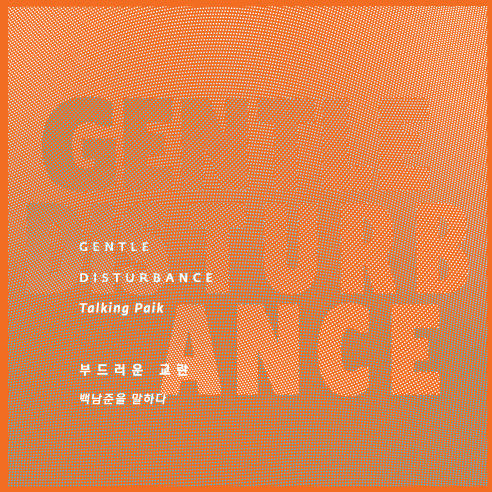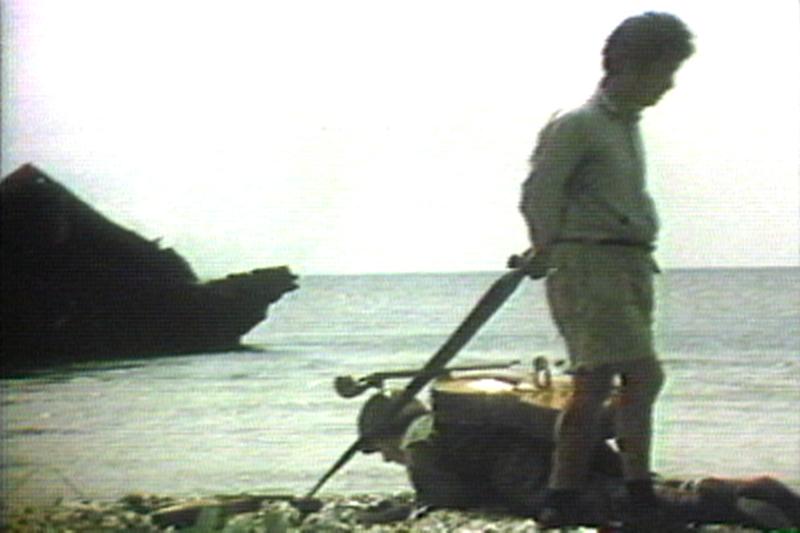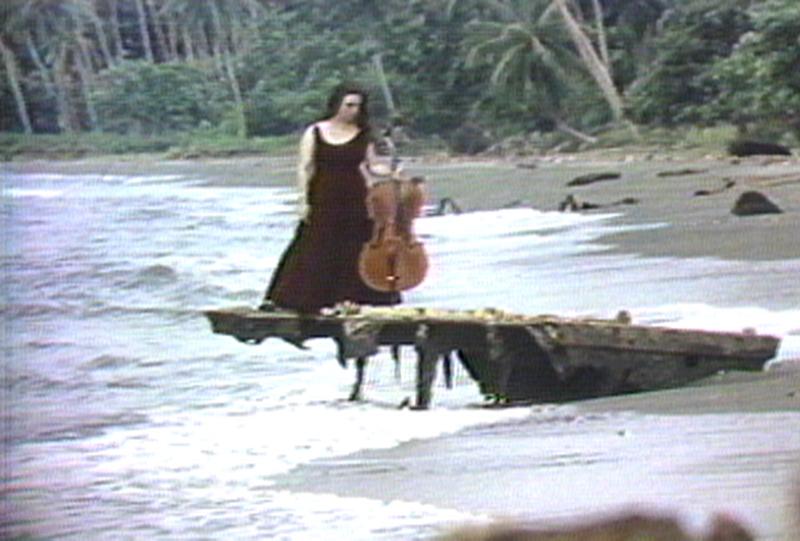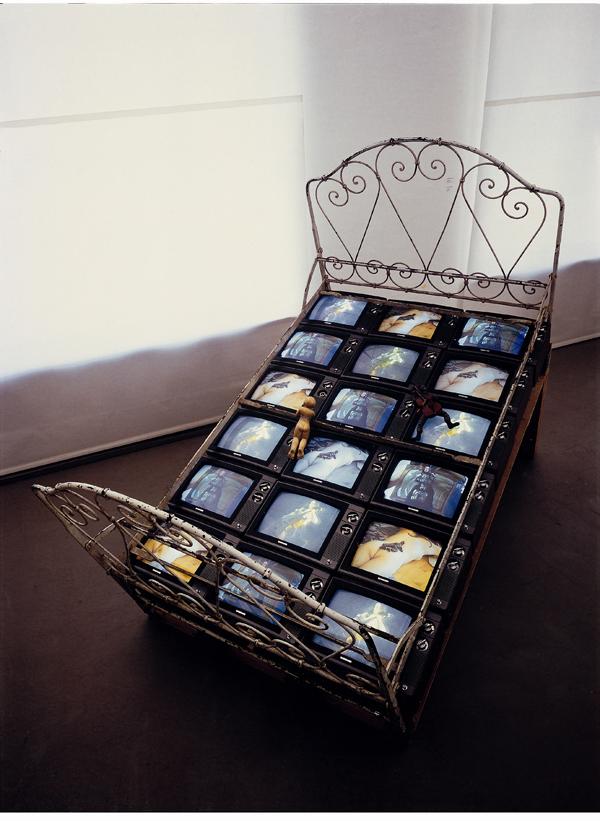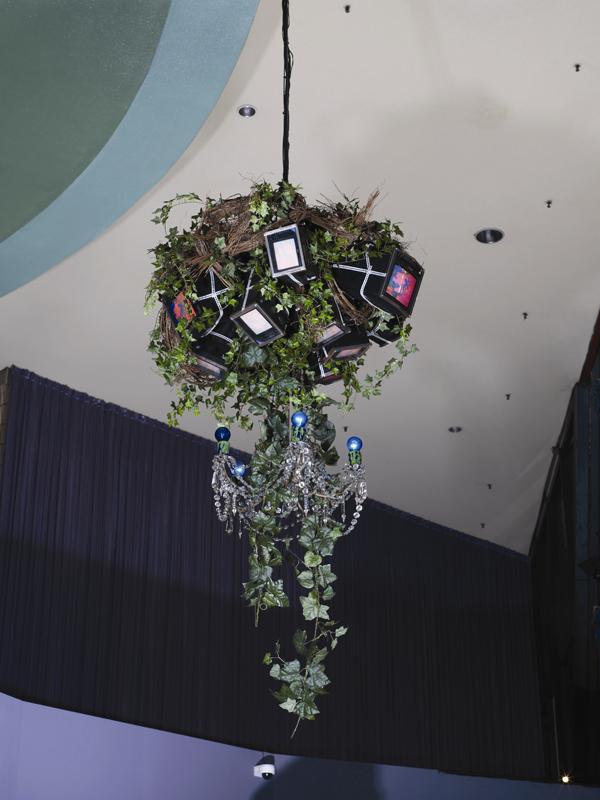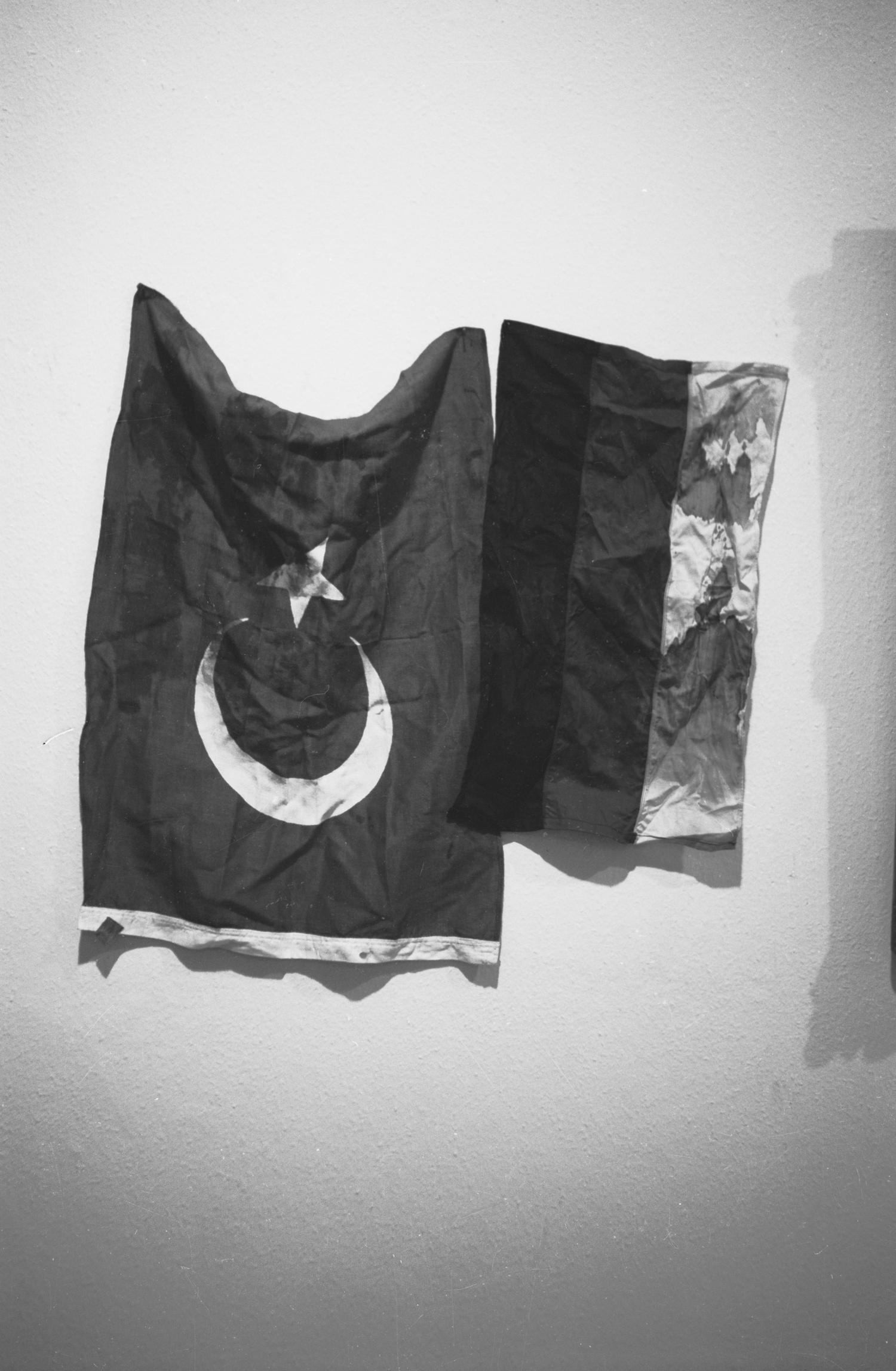With increasing polarization between the old and new generations, political movements opposed to the existing social order ceaselessly occurred in Europe and America in the 60s and 70s. This was also the case in the sectors of art and culture. Such artists as Nam June Paik in their attempts to change the world employed video as a medium that could be shared with a larger audience. Video was an important tool for artists to challenge social absurdities.
The exhibition Gentle Disturbance – Talking Paik begins with Guadalcanal Requiem, considered Paik’s most politically conscious work. The site of one of the most devastating battles in World War II, Guadalcanal in the Solomon Islands, provides the material for Guadalcanal Requiem in which Paik not only comments on the destructive war but also challenges social taboos. Guadalcanal Requiem was premiered as part of the concert Jail to Jungle at Carnegie Hall, New York in 1977. The jail here refers to the incident where Charlotte Moorman was arrested for the performance Opera Sextronique in 1967 in which she played the cello unclothed. Paik questioned social conventions by bringing issues of sexuality to the foreground in music and criticizing classical music which was too often treated in a serious and sacred manner.
Calling attention to the memory and trauma experienced by war victors and victims, Paik caused gentle disturbance by his ways of working with video transcending time and space in Guadalcanal Requiem. This exhibition presents the works and materials of Paik’s ‘gentle disturbance,’ including Guadalcanal Requiem and Opera Sextronique, which raise questions about the meaning of political art and the nature of social participation.















